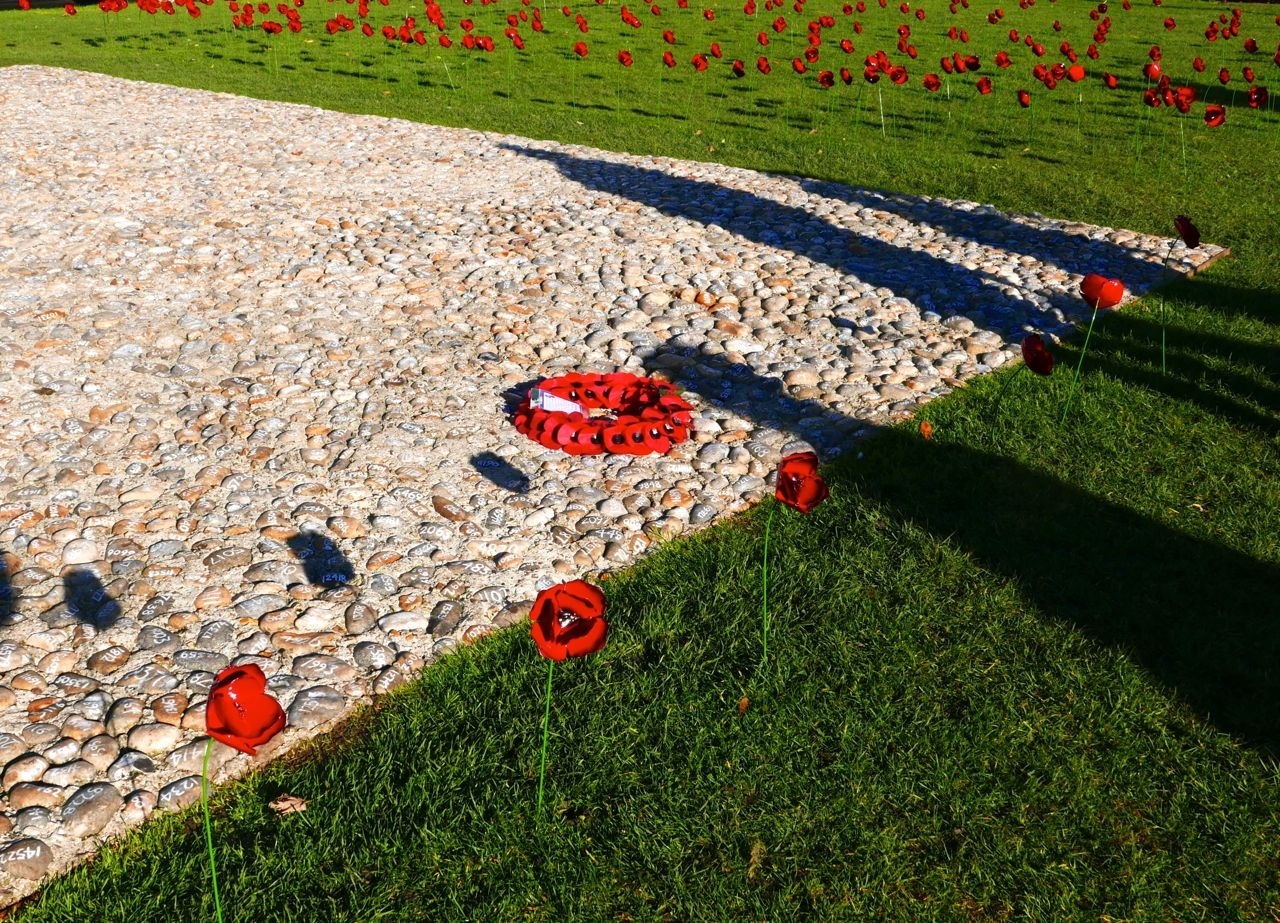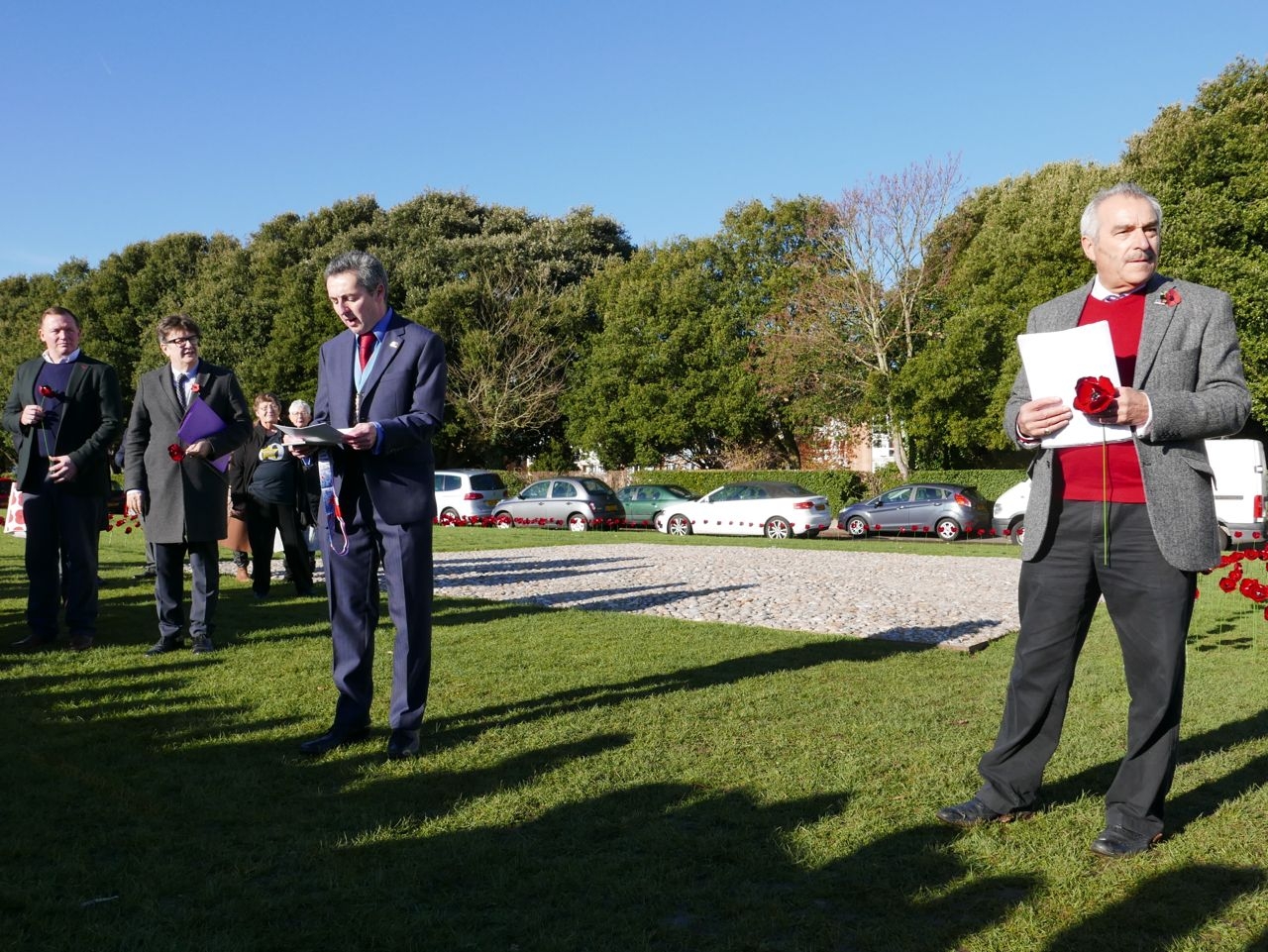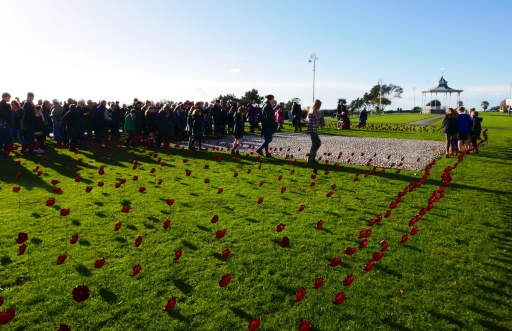Children planted hundreds of poppies in the former WW1 Channel port of Folkestone on 19 November 2016 to mark the conclusion of the Battle of the Somme 100 years ago.
Families gathered for the ceremony on the The Leas, elegant ciff top gardens with views towards the French coast, which were used as a military rest camp during the Great War.
Hundreds of thousands of troops passed through Folkestone, and the neighbouring port of Dover, on their way to France and the battlefields of the Western Front.
The bright red metal poppies, measuring about 45-cms high, were placed around the town’s distinctive ‘Folk Stones’ monument to the dead of the Somme, watched by the acclaimed artist Mark Wallinger, creator of the memorial.
19,240 individually numbered beach pebbles are laid out in a giant square, each representing a member of the British forces killed on the disastrous first day of the 1916 Allied offensive.

The poppies and the ‘Folk Stones’ Somme memorial (Photo: Centenary News)
“Today’s proceedings are a fitting way that this town can remember the sacrifices made to enable us to live in freedom and peace 100 years later,” said Folkestone’s Mayor, Martin Salmon.
“At their peak, the three camps in the town were seeing in excess of 10,000 men passing through every day. The rest camps were a blessing for the men, for many of whom it was their final day on English soil.”
A poem written by Second Lieutenant Eric Berridge, a Folkestone officer killed on the Somme in 1916, was read by Roger Joyce, Chairman of Shepway HEART Forum, an umbrella group for local heritage and arts projects.
‘Step Short’
Saturday’s commemorative event was organised by Shepway HEART, together with Step Short and the Shorncliffe Trust, charities dedicated to safeguarding Folkestone’s military heritage.
Just a short distance from the ‘Folk Stones’ is the steel Step Short arch, opened by Prince Harry on 4 August 2014, the Centenary of Britain entering the Great War.
‘Step Short’ was a safety order given to soldiers as they marched down the steep hill to Folkestone Harbour.
“What has been wonderful throughout this series of important and poignant centenaries is that people have demonstrated their interest, and their understanding, and their desire for remembrance and commemoration of these terrible events and the sacrifices that men made”, said Folkestone’s Member of Parliament and Step Short Chairman, Damian Collins.
 Folkestone Mayor Martin Salmon speaking at the poppy ceremony with (from left) MP Damian Collins, artist Mark Wallinger, and the event organiser Roger Joyce (Photo: Centenary News)
Folkestone Mayor Martin Salmon speaking at the poppy ceremony with (from left) MP Damian Collins, artist Mark Wallinger, and the event organiser Roger Joyce (Photo: Centenary News)
Centenary News reported from the Step Short arch dedication on 4 August 2014.
Images: Centenary News
Posted by: CN Editor Peter Alhadeff, reporting from Folkestone
